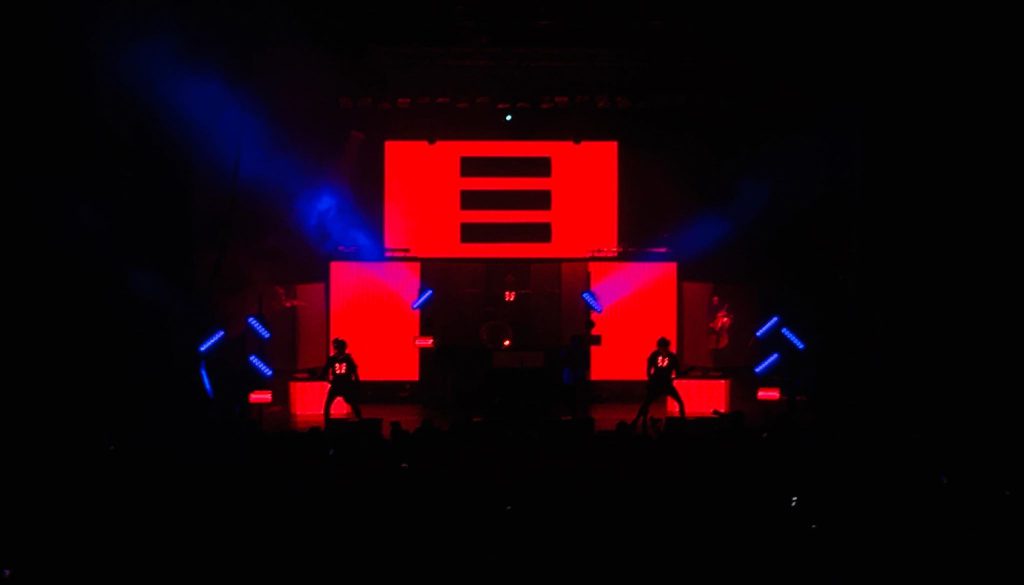Rodger Pugh Bending Reality With Light
Posted on June 27, 2019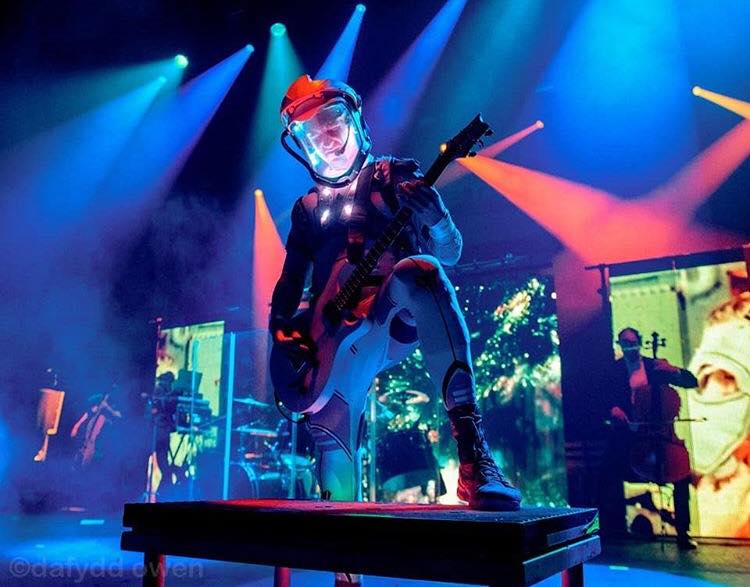
Without light there is no reality… at least not in the common form of the shapes, colors and endless contours that confirm the established order of things. Driving out the shadows, light defines all that is familiar. But manipulate it just a bit, twist its angles, or send it flying off in unexpected directions, and light can suddenly bend reality like some form of molten glass.
Challenging perception, divergent light frees the human spirit from habitual constraints, and sets it free to explore possibilities that lay just beyond the reach of convention. Pursing this form of freedom, Rodger Pugh has pushed lighting design concepts to the edge for clients like the sci-fi inspired band Starset.
For Pugh, immersing the audience in a design involves not just enveloping the senses, but provoking them to see beyond the possible and enter the realm of imagination. The owner of Tempe, Arizona-based Dveus Design, Pugh talked to us about how he creates these transformative looks.
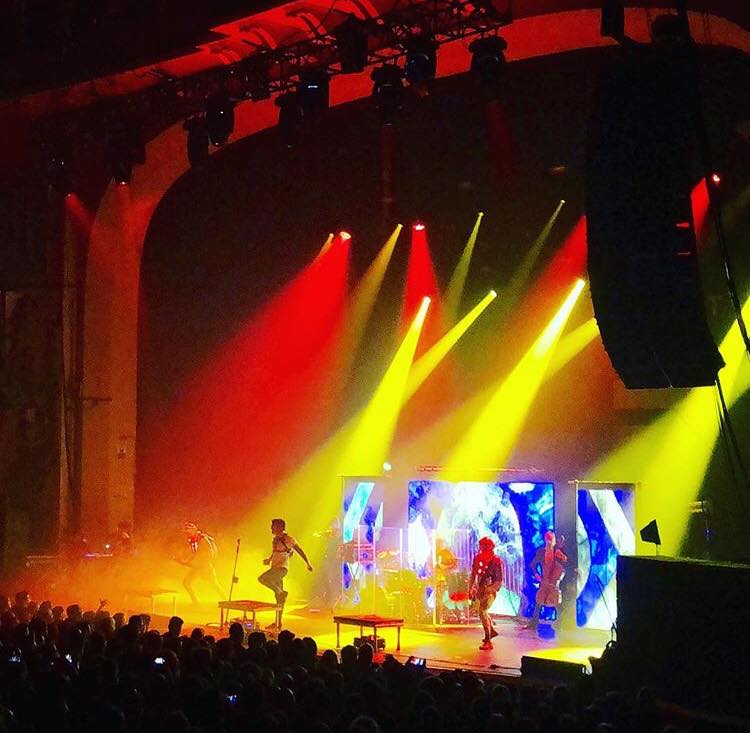
In your work for Starset and others, you incorporate a lot of “sci-fi” looks that seem to offer a different perspective that the normal everyday way of seeing things on stage? Do you take a different approach toward designing this kind of show than you would a more realistic-oriented light show?
“Absolutely, traditionally the goal is to light the band whereas with Starset the goal is to accent the music without drawing too much attention to the players. This requires following parts of the song that may have been over looked in a traditional design. Key light becomes secondary while stabs and stings become primary.”
So, what’s the first thing you do with a lighting design if you want to distort reality with it?
“Unpatch the downstage truss. This makes you step out of the programming comfort zone right out of the gate. Take away the key lighting and it forces you to think outside of the traditional boxes.”
Given what you just said, we can assume that backlighting plays a key role in sci-fi design?
“Absolutely! It’s the most important part of a sci-fi type design. The lack of key lighting means that the side and back fills are 80% of the show. This is what creates the mood with deep silhouettes and hard shadows.”
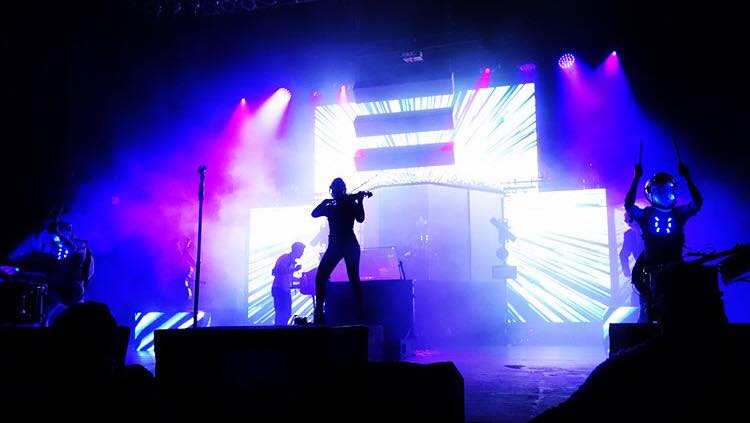
You like to explore different kinds of light angles to bend reality. Can you describe how different angles work to create this reality bending effect?
“The use of abstract angles emphasizes the mood. It’s really about getting the most out of a little. With Starset’s cubes there isn’t much stage footprint left for lighting, so this requires getting creative with what we can fit. As they say ‘necessity’s the mother of all invention.’”
Speaking of those cubes, on the recent Starset tour you went from lighting them in color to projecting video images on them. How does this kind of switching help you create a sci-fi feel?
“The original goal of the tour was to immerse the audience in the experience. The push and pull between the risers brought the entire set into the show, thereby immersing the audience. Basically the stage is almost like a machine that opens up to show its works.”
Are any colors more conducive to bending reality than others?
“Really any color can be mysterious; it’s all about how you apply it. We use a lot of deep primary colors with some pastels for the brighter moods.”
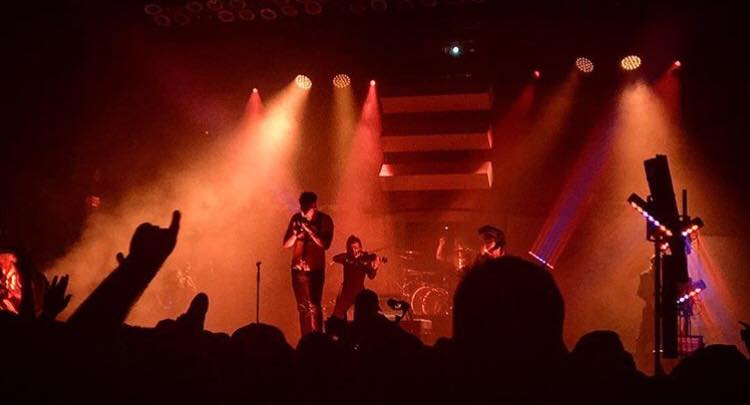
Where do you get your inspiration for your outside the box ideas?
“Sci-fi movies, comics and watching a lot of old industrial concerts. I also pull inspiration from other LDs of course. Roy Bennet, for example, is quite the inspiration.”
What kind of feedback do bands give you on your design?
“It’s mixed, but it seems a lot of the established touring acts are intrigued by our show, but there are always the ones who think we have too much production. However, I think that’s part of what makes Starset special, they always bring ‘a show’ for the audience.”
What’s the most reality bending lightshow you ever designed?
“Without a doubt, Starset’s Immersion Tour.”
If you had to sum it up, how does a sci-fi design contribute to the audience’s experience?
“It’s not that difficult, the show is an immersive experience. Anyone can go see a show, we want you to be immersed in it. Sci-fi plays to the imagination, it lets the audience interpret with a little more discretion than a traditional concert.”
